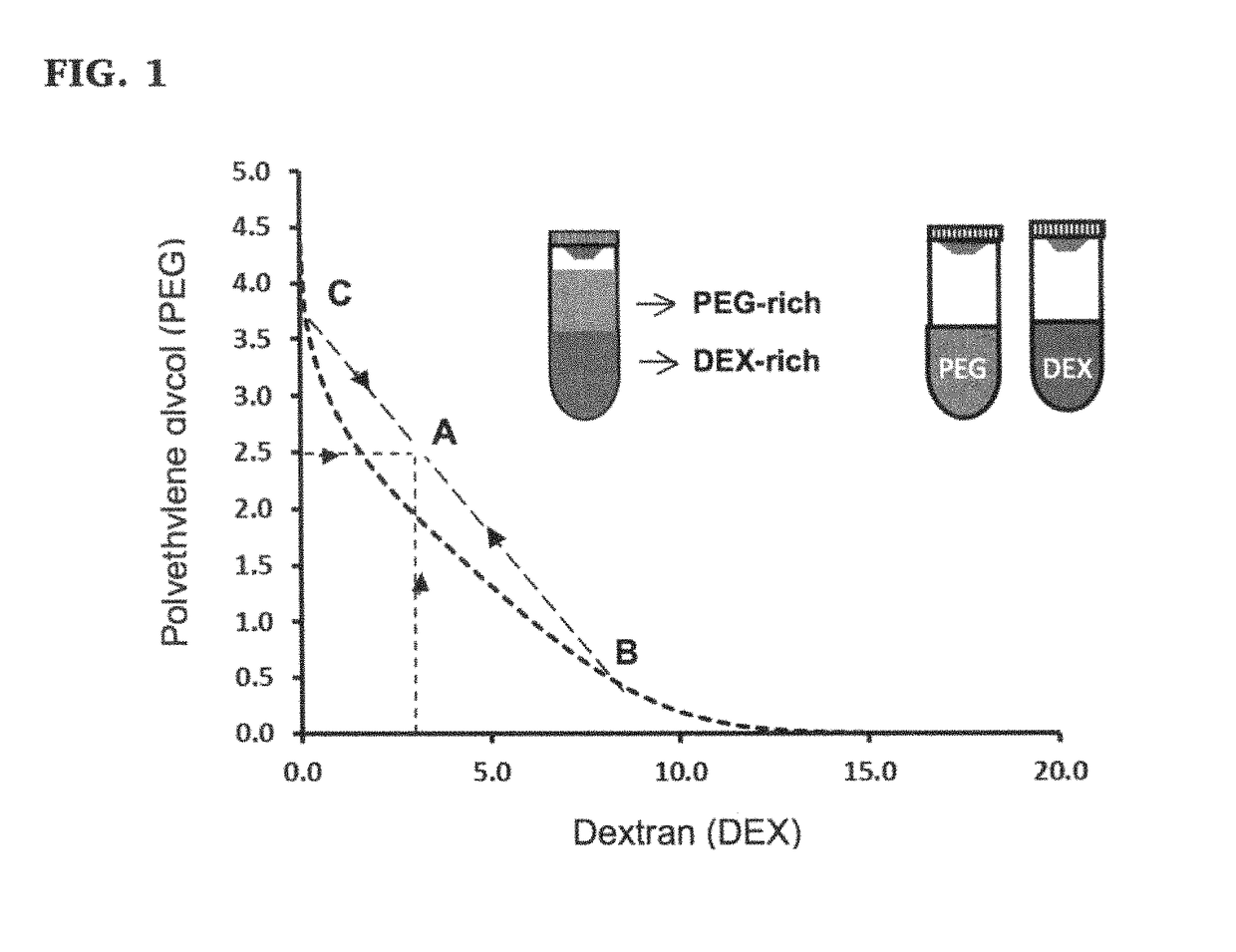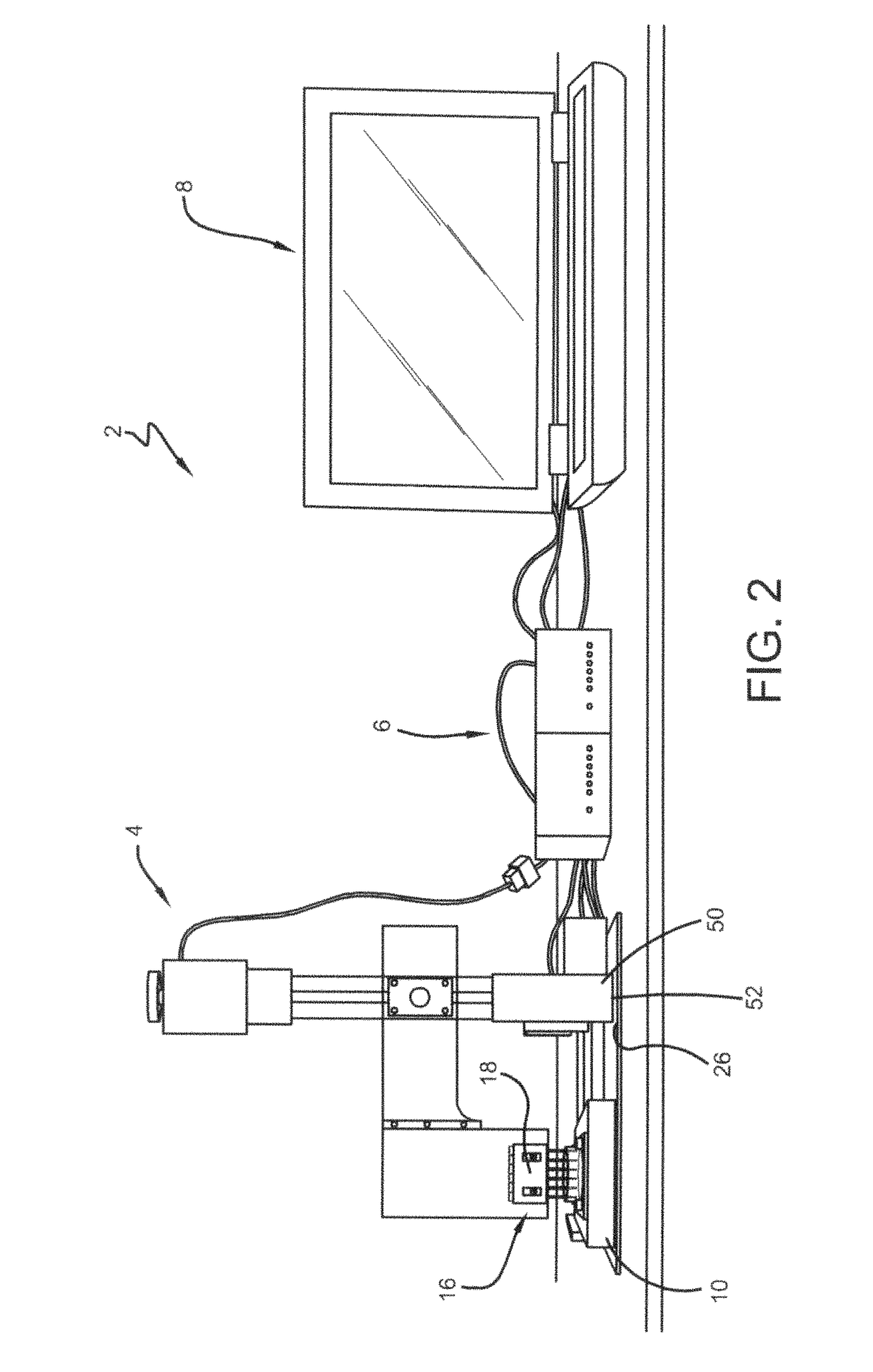Automated cell and tissue bioprinter
a bioprinter and tissue technology, applied in the field of tissue engineering, can solve problems such as the limitation of cell placement and alignment, and achieve the effects of reducing the width of the pattern, reducing the size, and increasing the speed
- Summary
- Abstract
- Description
- Claims
- Application Information
AI Technical Summary
Benefits of technology
Problems solved by technology
Method used
Image
Examples
example 1
Preparation of Aqueous PEG and DEX Stock Solutions
[0094]For all printing experiments, an ATPS with 5.0% (w / w) polyethylene glycol (PEG, Mw: 35 k) and 6.4% (w / w) dextran (DEX, Mw: 500 k), was used as phase-forming polymers. PEG and DEX were obtained from Sigma and Pharmacosmos, respectively. Each phase was individually prepared with these concentrations in growth medium. The DEX phase was prepared twice the final concentration to account for mixing with the PEG and cell suspension at a 1:1 ratio (FIG. 8A). Centrifuge tubes containing the solutions were allowed to rest in a vertical position at room temperature for ˜2 hours for the polymer to fully dissolve. The stock solutions were then stored at 4° C.
example 2
Preparation of Printing Surface and Printing Phase
[0095]For each experiment, the printing surface was maintained in 5% (w / w) PEG (FIG. 8B). Five different types of surfaces were prepared or provided to assess the stability of printed patterns of the DEX phase, including decellularized matrices, cell monolayer replica, live cell monolayers of different confluence, molecularly smooth films of poly(D,L-lactic acid) (PDLA), and PDLA with fabricated striped microgrooves of 10 and 20 μm pitch.
[0096]Preparation of each surface is briefly discussed: (i) Decellularized matrices of MDA-MB-231 breast cancer cells and C2C12 mouse myoblast cells were prepared by treating a confluent monolayer with a 0.25% (v / v) Triton X-100 (Sigma) solution in PBS for 15 minutes. The monolayer was then washed three times with PBS to ensure the complete removal of all cell constituents except for the protein matrix laid down by cells on the surface. When prepared at least a day before printing, samples were maint...
example 3
Calibrations of the Three-Axis Motorized System
[0101]The three-axis motorized system was calibrated at the beginning of each experiment. The printer head containing the cartridge and printing tips was programmed to descend into an empty dish until the tip touched the dish surface. The printer head was then programmed to ascend ˜500 μm (78 steps) to prevent tips from scraping the printed surface during printing. Another script of commands was developed to print individual patterns for characterization studies. The printing tips were programmed to descend into the dish (FIG. 8C), perform a linear forward motion, ascend out of the dish, and then move an offset distance to prepare for the next print. The offset distances between each printed line for co-culture cell printing experiments were determined based on measurements of line width from characterization studies with FITC-DEX printing.
PUM
| Property | Measurement | Unit |
|---|---|---|
| depth | aaaaa | aaaaa |
| width | aaaaa | aaaaa |
| Laplace Pressure | aaaaa | aaaaa |
Abstract
Description
Claims
Application Information
 Login to View More
Login to View More - R&D
- Intellectual Property
- Life Sciences
- Materials
- Tech Scout
- Unparalleled Data Quality
- Higher Quality Content
- 60% Fewer Hallucinations
Browse by: Latest US Patents, China's latest patents, Technical Efficacy Thesaurus, Application Domain, Technology Topic, Popular Technical Reports.
© 2025 PatSnap. All rights reserved.Legal|Privacy policy|Modern Slavery Act Transparency Statement|Sitemap|About US| Contact US: help@patsnap.com



